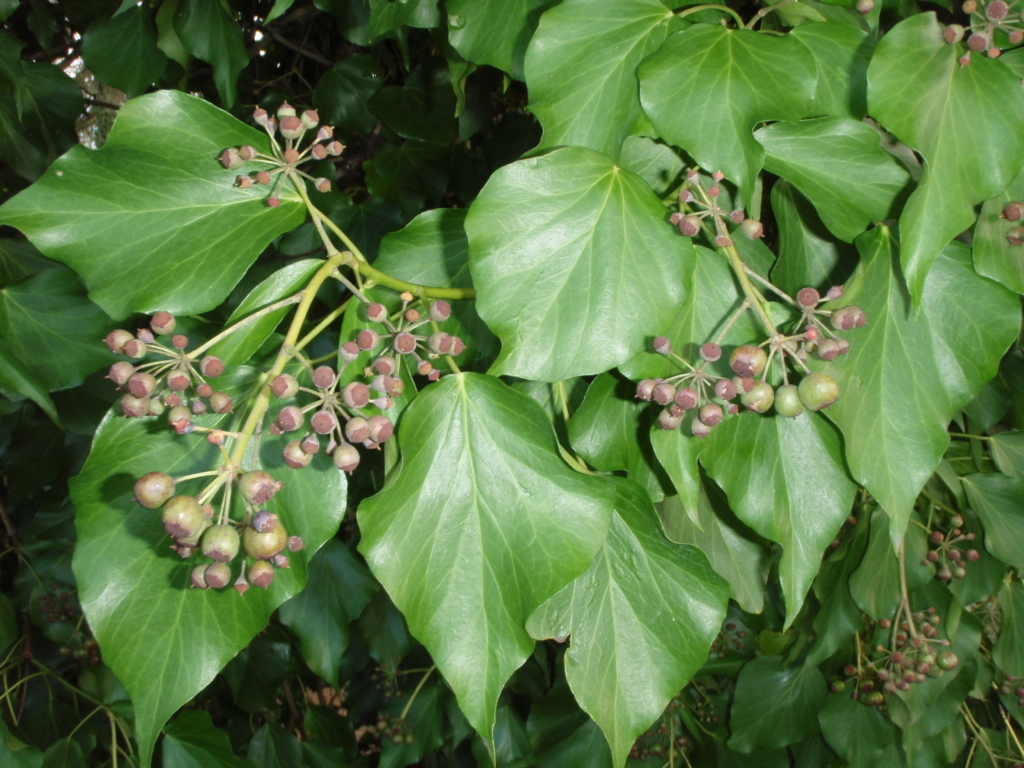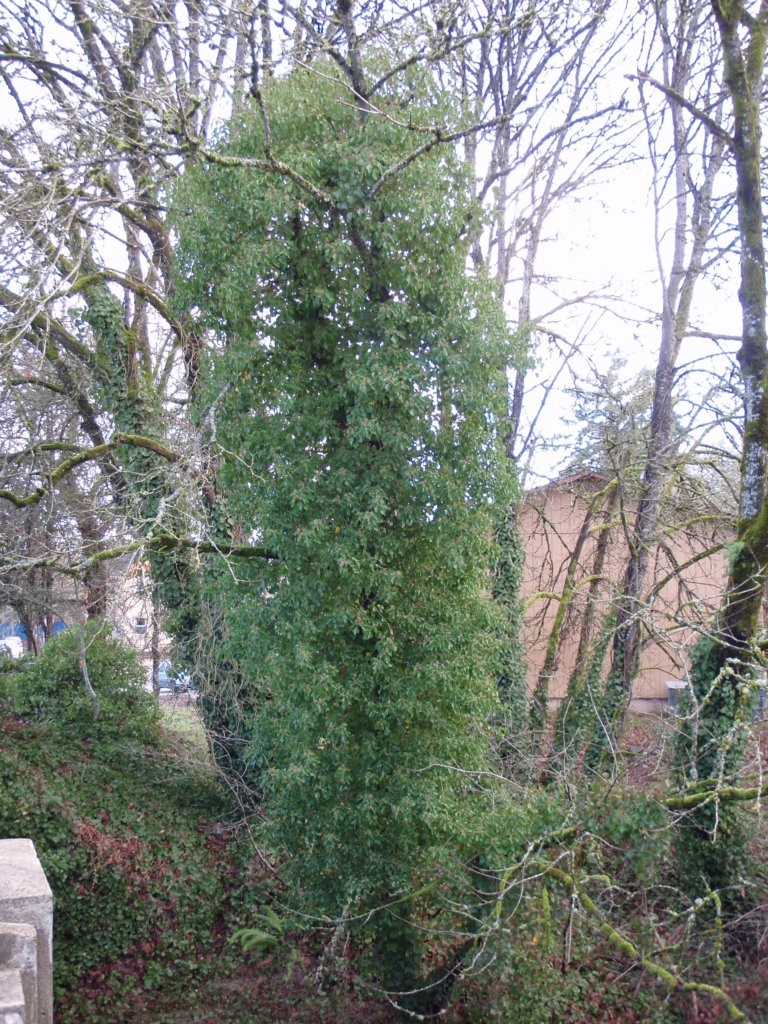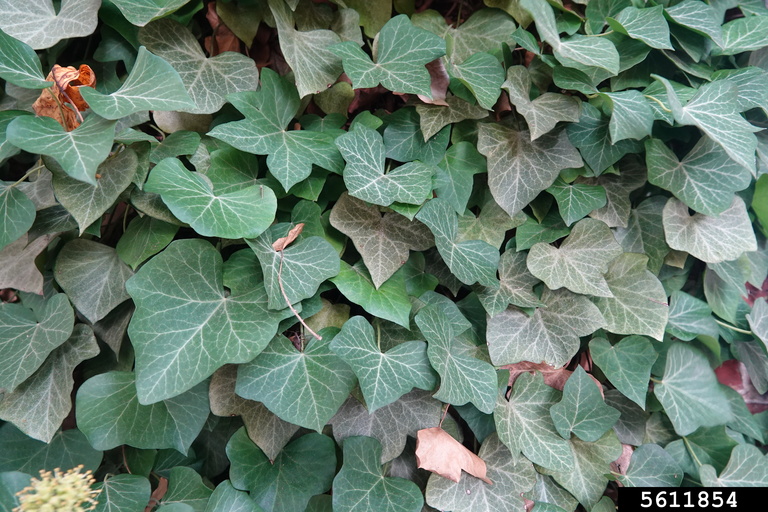English Ivy
Hedera helix
Plant Description
Evergreen vine with waxy leaves, long trailing stems, black berry-like fruits. Juvenile growth form is most common and have dull green lobed alternate leaves. Mature form has shiny unlobed leaves in whorl-like clusters with yellow green flowers in fall followed by purple-black berries in winter-spring. Climbing vines have rootlets that cling to almost any surface.
Plant Details
| Life Forms | |
|---|---|
| Habitats | |
| ODA Listing | |
| Soil and Moisture Conditions | |
| Suggested Actions | |
| Shade Preference | |
| Mature Height | 90' |
| Distribution | found throughout the Pacific Northwest |
| Control | Physical removal is effective. Pry stems off tree trunks and cut at two heights so an ivy free band is created around the trunk. Upper vines will die over time. Roll back ivy from lower portion of tree, like rolling a carpet. These piles can be left to rot. |
| Disposal Methods | Can be disposed of in yard debris cart or left to rot in place. |
| Reproduction and Spread | The vines spread vegetatively through its clibming vines and through seeds eaten and passed predominantly by non-native bird species. |
| Look Alikes | Irish ivy (Hedera hibernica) |
| Impact | Berries are toxic to humans; invades native forest habitats where dense thickets suppress germination and growth of native trees and shrubs; can prevent surrounding plants from obtaining sufficient moisture. Ivy weighs down trees making them more likely to fall. |
| More Info |
© Marion Soil and Water Conservation District. All Rights Reserved.



